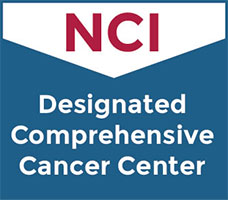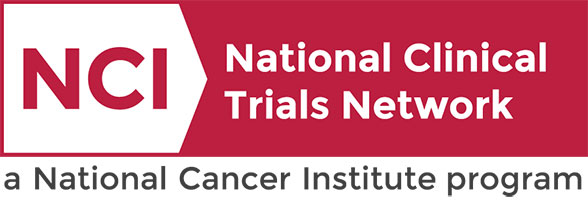Clinical Trials Search at Vanderbilt-Ingram Cancer Center
Testing Chemotherapy versus Chemotherapy plus Radiotherapy Prior to Limited Surgery for Early Rectal Cancer
This phase III trial compares the effect of the combination of fluorouracil, oxaliplatin, and leucovorin calcium (FOLFOX) or capecitabine and oxaliplatin (CAPOX) followed by limited surgery with transanal endoscopic surgery (TES) versus chemoradiation followed by TES for the treatment of early stage rectal cancer. The usual approach for patients who are not in a study is surgery to remove the rectum or treatment with chemotherapy and radiation therapy, followed by surgery. Fluorouracil stops cells from making deoxyribonucleic acid (DNA) and it may kill tumor cells. Leucovorin is in a class of medications called folic acid analogs. When used with fluorouracil, it enhances the effects of this chemotherapy drug. Oxaliplatin is in a class of medications called platinum-containing antineoplastic agents. It damages the cells DNA and may kill cancer cells. CAPOX is a combination of two drugs (capecitabine and oxaliplatin) and used as standard chemotherapy in treatment of rectal cancer. CAPOX works by damaging the DNA in tumor cells, and may cause the cells to stop growing and die. Radiation therapy uses high energy x-rays, particles, or radioactive seeds to kill tumor cells and shrink tumors. This study will help researchers find out if chemotherapy with FOLFOX or CAPOX prior to surgery works better, the same, or worse than the usual approach and improves the quality of life in patients with early rectal cancer.
Not Available
III
Eng, Cathy
NCT06205485
SWOGGICO32
Dinutuximab with Chemotherapy, Surgery and Stem Cell Transplantation for the Treatment of Children with Newly Diagnosed High Risk Neuroblastoma
This phase III trial tests how well adding dinutuximab to induction chemotherapy along with standard of care surgery radiation and stem cell transplantation works for treating children with newly diagnosed high risk neuroblastoma. Dinutuximab is a monoclonal antibody that binds to a molecule called GD2, which is found in greater than normal amounts on some types of cancer cells. This helps cells of the immune system kill the cancer cells. Chemotherapy drugs such as cyclophosphamide, topotecan, cisplatin, etoposide, vincristine, dexrazoxane, doxorubicin, temozolomide, irinotecan and isotretinoin, work in different ways to stop the growth of cancer cells, either by killing the cells, by stopping them from dividing or by stopping them from spreading. During induction, chemotherapy and surgery are used to kill and remove as much tumor as possible. During consolidation, very high doses of chemotherapy are given to kill any remaining cancer cells. This chemotherapy also destroys healthy bone marrow, where blood cells are made. A stem cell transplant is a procedure that helps the body make new healthy blood cells to replace the blood cells that may have been harmed by the cancer and/or chemotherapy. Radiation therapy is also given to the site where the cancer originated (primary site) and to any other areas that are still active at the end of induction.
Not Available
III
Benedetti, Daniel
NCT06172296
VICC-NTPED24104
Venetoclax in Children With Relapsed Acute Myeloid Leukemia (AML)
Multiple Cancer Types
A study to evaluate if the randomized addition of venetoclax to a chemotherapy backbone
(fludarabine/cytarabine/gemtuzumab ozogamicin [GO]) improves survival of
children/adolescents/young adults with acute myeloid leukemia (AML) in 1st relapse who are
unable to receive additional anthracyclines, or in 2nd relapse.
(fludarabine/cytarabine/gemtuzumab ozogamicin [GO]) improves survival of
children/adolescents/young adults with acute myeloid leukemia (AML) in 1st relapse who are
unable to receive additional anthracyclines, or in 2nd relapse.
Pediatric Leukemia,
Pediatrics
III
Smith, Christine
NCT05183035
VICCPED2237
A Study of Tucatinib With Trastuzumab and mFOLFOX6 Versus Standard of Care Treatment in First-line HER2+ Metastatic Colorectal Cancer
This study is being done to find out if tucatinib with other cancer drugs works better than
standard of care to treat participants with HER2 positive colorectal cancer. This study will
also test what side effects happen when participants take this combination of drugs. A side
effect is anything a drug does to the body besides treating your disease.
Participants in this study have colorectal cancer that has spread through the body
(metastatic) and/or cannot be removed with surgery (unresectable).
Participants will be assigned randomly to the tucatinib group or standard of care group. The
tucatinib group will get tucatinib, trastuzumab, and mFOLFOX6. The standard of care group
will get either:
- mFOLFOX6 alone,
- mFOLFOX6 with bevacizumab, or
- mFOLFOX6 with cetuximab mFOLFOX6 is a combination of multiple drugs. All of the drugs
given in this study are used to treat this type of cancer.
standard of care to treat participants with HER2 positive colorectal cancer. This study will
also test what side effects happen when participants take this combination of drugs. A side
effect is anything a drug does to the body besides treating your disease.
Participants in this study have colorectal cancer that has spread through the body
(metastatic) and/or cannot be removed with surgery (unresectable).
Participants will be assigned randomly to the tucatinib group or standard of care group. The
tucatinib group will get tucatinib, trastuzumab, and mFOLFOX6. The standard of care group
will get either:
- mFOLFOX6 alone,
- mFOLFOX6 with bevacizumab, or
- mFOLFOX6 with cetuximab mFOLFOX6 is a combination of multiple drugs. All of the drugs
given in this study are used to treat this type of cancer.
Not Available
III
Not Available
NCT05253651
VICC-DTGIT23052
Post-Surgical Stereotactic Radiotherapy (SRT) Versus GammaTile-ROADS (Radiation One and Done Study)
This trial will be a randomized controlled study comparing the efficacy and safety of
intraoperative radiation therapy using GammaTilesTM (GT) versus SRT 3-4 weeks following
metastatic tumor resection which is the current standard of care.
intraoperative radiation therapy using GammaTilesTM (GT) versus SRT 3-4 weeks following
metastatic tumor resection which is the current standard of care.
Not Available
III
Chambless, Lola
NCT04365374
VICC-DTNEU23344
A Trial Comparing Unrelated Donor BMT With IST for Pediatric and Young Adult Patients With Severe Aplastic Anemia (TransIT, BMT CTN 2202)
Pediatrics
Pediatrics
Severe Aplastic Anemia (SAA) is a rare condition in which the body stops producing enough new
blood cells. SAA can be cured with immune suppressive therapy or a bone marrow transplant.
Regular treatment for patients with aplastic anemia who have a matched sibling (brother or
sister), or family donor is a bone marrow transplant. Patients without a matched family donor
normally are treated with immune suppressive therapy (IST). Match unrelated donor (URD) bone
marrow transplant (BMT) is used as a secondary treatment in patients who did not get better
with IST, had their disease come back, or a new worse disease replaced it (like leukemia).
This trial will compare time from randomization to failure of treatment or death from any
cause of IST versus URD BMT when used as initial therapy to treat SAA.
The trial will also assess whether health-related quality of life and early markers of
fertility differ between those randomized to URD BMT or IST, as well as assess the presence
of marrow failure-related genes and presence of gene mutations associated with MDS or
leukemia and the change in gene signatures after treatment in both study arms.
This study treatment does not include any investigational drugs. The medicines and procedures
in this study are standard for treatment of SAA.
blood cells. SAA can be cured with immune suppressive therapy or a bone marrow transplant.
Regular treatment for patients with aplastic anemia who have a matched sibling (brother or
sister), or family donor is a bone marrow transplant. Patients without a matched family donor
normally are treated with immune suppressive therapy (IST). Match unrelated donor (URD) bone
marrow transplant (BMT) is used as a secondary treatment in patients who did not get better
with IST, had their disease come back, or a new worse disease replaced it (like leukemia).
This trial will compare time from randomization to failure of treatment or death from any
cause of IST versus URD BMT when used as initial therapy to treat SAA.
The trial will also assess whether health-related quality of life and early markers of
fertility differ between those randomized to URD BMT or IST, as well as assess the presence
of marrow failure-related genes and presence of gene mutations associated with MDS or
leukemia and the change in gene signatures after treatment in both study arms.
This study treatment does not include any investigational drugs. The medicines and procedures
in this study are standard for treatment of SAA.
Pediatrics
III
Connelly, James
NCT05600426
VICCPED2295
Evaluation of EBUS-TBNA versus EBUS-TBNA plus Transbronchial Mediastinal Cryobiopsy to Obtain Adequate Tissue Samples for Next Generation Sequencing, META-Gen Trial
This phase III trial compares how well endobronchial ultrasound-transbronchial needle aspiration (EBUS-TBNA) versus EBUS-TBNA plus transbronchial mediastinal cryobiopsy works to obtain adequate tissue samples for next generation sequencing (NGS). During usual care, if there is suspicion of cancer, a procedures known as an EBUS-TBNA is done to take sample of lymph nodes to evaluate for cancer spread. If there is suspected cancer in the lymph nodes, multiple samples are taken for molecular testing (NGS) to help guide treatment decisions. It requires a certain amount of tissue to send for the molecular testing which can be achieved with EBUS-TBNA about 70% of the time. Researchers want to find out if adding a biopsy tool currently used in usual care, known as a cryoprobe, can acquire more tissue for molecular analysis. The cryoprobe uses a freezing technique to biopsy and can potentially gather larger and higher quality tissue samples than the standard EBUS-TBNA method.
Not Available
III
Maldonado, Fabien
NCT06105801
VICC-VDTHO23177
Studying the Effect of Levocarnitine in Protecting the Liver from Chemotherapy for Leukemia or Lymphoma
Multiple Cancer Types
This phase III trial compares the effect of adding levocarnitine to standard chemotherapy vs. standard chemotherapy alone in protecting the liver in patients with leukemia or lymphoma. Asparaginase is part of the standard of care chemotherapy for the treatment of acute lymphoblastic leukemia (ALL), lymphoblastic lymphoma (LL), and mixed phenotype acute leukemia (MPAL). However, in adolescent and young adults (AYA) ages 15-39 years, liver toxicity from asparaginase is common and often prevents delivery of planned chemotherapy, thereby potentially compromising outcomes. Some groups of people may also be at higher risk for liver damage due to the presence of fat in the liver even before starting chemotherapy. Patients who are of Japanese descent, Native Hawaiian, Hispanic or Latinx may be at greater risk for liver damage from chemotherapy for this reason. Carnitine is a naturally occurring nutrient that is part of a typical diet and is also made by the body. Carnitine is necessary for metabolism and its deficiency or absence is associated with liver and other organ damage. Levocarnitine is a drug used to provide extra carnitine. Laboratory and real-world usage of the dietary supplement levocarnitine suggests its potential to prevent or reduce liver toxicity from asparaginase. The overall goal of this study is to determine whether adding levocarnitine to standard of care chemotherapy will reduce the chance of developing severe liver damage from asparaginase chemotherapy in ALL, LL and/or MPAL patients.
Leukemia,
Pediatric Leukemia
III
Not Available
NCT05602194
VICC-NTPED23475
A Phase 3, Randomized, Open-label, Multi-Center Study Evaluating the Efficacy and Safety of TAR-200 Versus Investigator's Choice of Intravesical Chemotherapy in Participants Who Received Bacillus Calmette-Gurin (BCG) and Recurred with High-risk Non-Muscle-invasive Bladder Cancer (HR-NMIBC) and Who Are Ineligible for or Elected Not to Undergo Radical Cystectomy SunRISe-5
Not Available
III
Luckenbaugh, Amy
NCT06211764
VICC-DDURO24103
A Phase 3, Randomized Study of Adjuvant Cretostimogene Grenadenorepvec versus Observation for the Treatment of Intermediate Risk Non-Muscle Invasive Bladder Cancer (IR-NMIBC) Following Transurethral Resection of Bladder Tumor (TURBT)
Not Available
III
Luckenbaugh, Amy
NCT06111235
VICC-DDURO24101


